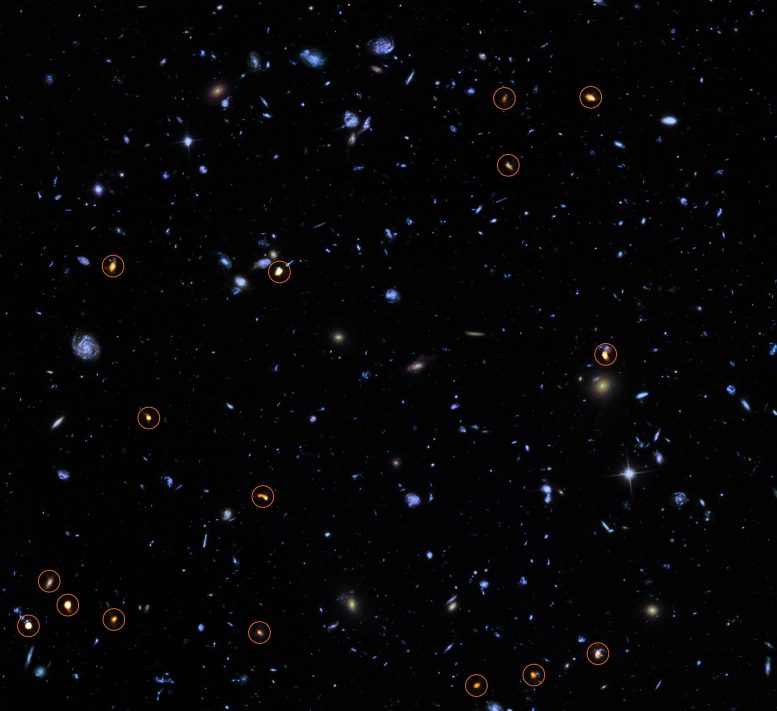
This image combines a background picture taken by the NASA/ESA Hubble Space Telescope (blue/green) with a new very deep ALMA view of this field (orange, marked with circles). All the objects that ALMA sees appear to be massive star-forming galaxies. This image is based on the ALMA survey by J. Dunlop and colleagues, covering the full HUDF area. Credit: ALMA (ESO/NAOJ/NRAO)/NASA/ESA/J. Dunlop et al. and S. Beckwith (STScI) and the HUDF Team
Using the Atacama Large Millimeter/submillimeter Array, international teams of astronomers explore the distant corner of the Universe first revealed in the iconic images of the Hubble Ultra Deep Field (HUDF).
New ALMA observations are significantly deeper and sharper than previous surveys at millimeter wavelengths. They clearly show how the rate of star formation in young galaxies is closely related to their total mass in stars. They also trace the previously unknown abundance of star-forming gas at different points in time, providing new insights into the “Golden Age” of galaxy formation approximately 10 billion years ago.
The new ALMA results will be published in a series of papers appearing in the Astrophysical Journal and Monthly Notices of the Royal Astronomical Society. These results are also among those being presented this week at the Half a Decade of ALMA conference in Palm Springs, California, USA.
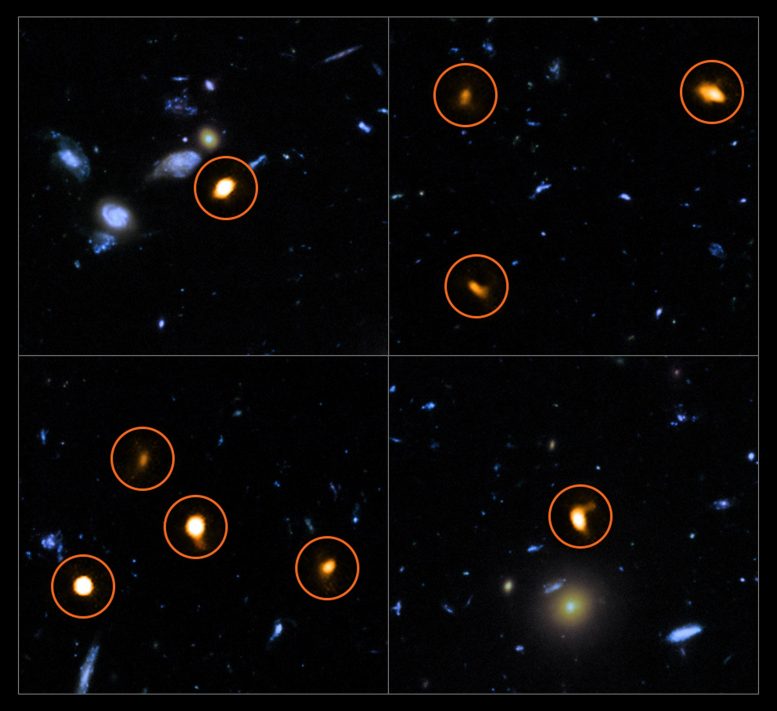
These cutout images are from a combination of a background picture taken by the NASA/ESA Hubble Space Telescope (blue/green) with a new very deep ALMA view of the field (orange, marked with circles). All the objects that ALMA sees appear to be massive star-forming galaxies. This image is based on the ALMA survey by J. Dunlop and colleagues, covering the full HUDF area. Credit: ALMA (ESO/NAOJ/NRAO)/NASA/ESA/J. Dunlop et al. and S. Beckwith (STScI) and the HUDF Team
In 2004 the Hubble Ultra Deep Field images — pioneering deep-field observations with the NASA/ESA Hubble Space Telescope — were published. These spectacular pictures probed more deeply than ever before and revealed a menagerie of galaxies stretching back to less than a billion years after the Big Bang. The area was observed several times by Hubble and many other telescopes, resulting in the deepest view of the Universe to date.
Astronomers using ALMA have now surveyed this seemingly unremarkable, but heavily studied, window into the distant Universe for the first time both deeply and sharply in the millimeter range of wavelengths.[1] This allows them to see the faint glow from gas clouds and also the emission from warm dust in galaxies in the early Universe.
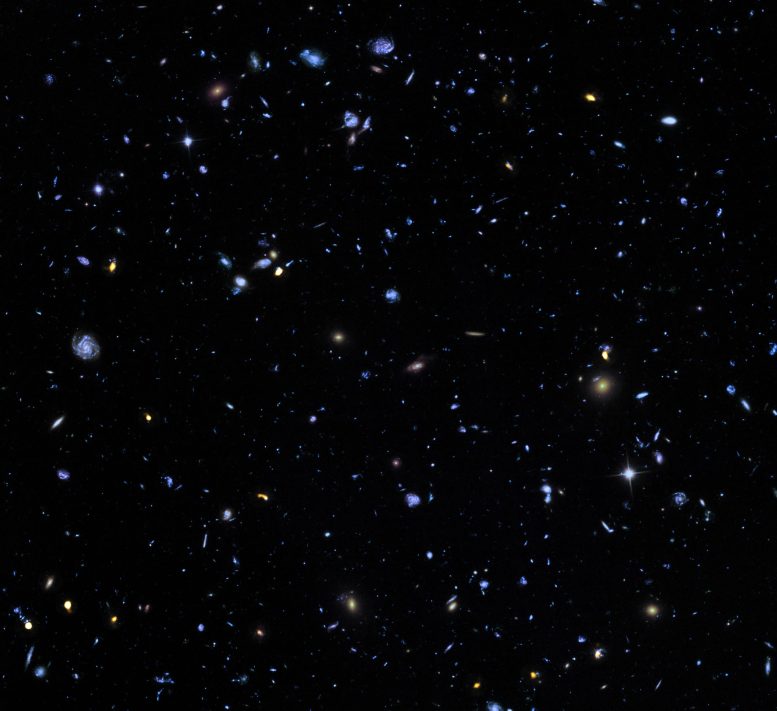
This image, called the Hubble eXtreme Deep Field (XDF), combines Hubble observations taken over the past decade of a small patch of sky in the constellation of Fornax. With a total of over two million seconds of exposure time, it is the deepest image of the Universe ever made, combining data from previous images including the Hubble Ultra Deep Field (taken in 2003 and 2004) and Hubble Ultra Deep Field Infrared (2009).
The image covers a region less than a tenth of the width of the full Moon across, making it just a 30 millionth of the whole sky. Yet even in this tiny fraction of the sky, the long exposure reveals about 5500 galaxies, some of them so distant that we see them when the Universe was less than 5% of its current age.
The Hubble eXtreme Deep Field image contains several of the most distant objects ever identified.
Credit: NASA, ESA, G. Illingworth, D. Magee, and P. Oesch (University of California, Santa Cruz), R. Bouwens (Leiden University), and the HUDF09 Team
ALMA has observed the HUDF for a total of around 50 hours up to now. This is the largest amount of ALMA observing time spent on one area of the sky so far.
One team led by Jim Dunlop (University of Edinburgh, United Kingdom) used ALMA to obtain the first deep, homogeneous ALMA image of a region as large as the HUDF. This data allowed them to clearly match up the galaxies that they detected with objects already seen with Hubble and other facilities.
This study showed clearly that the stellar mass of a galaxy is the best predictor of star formation rate in the high redshift Universe. All the galaxies detected were of high-mass.[2]
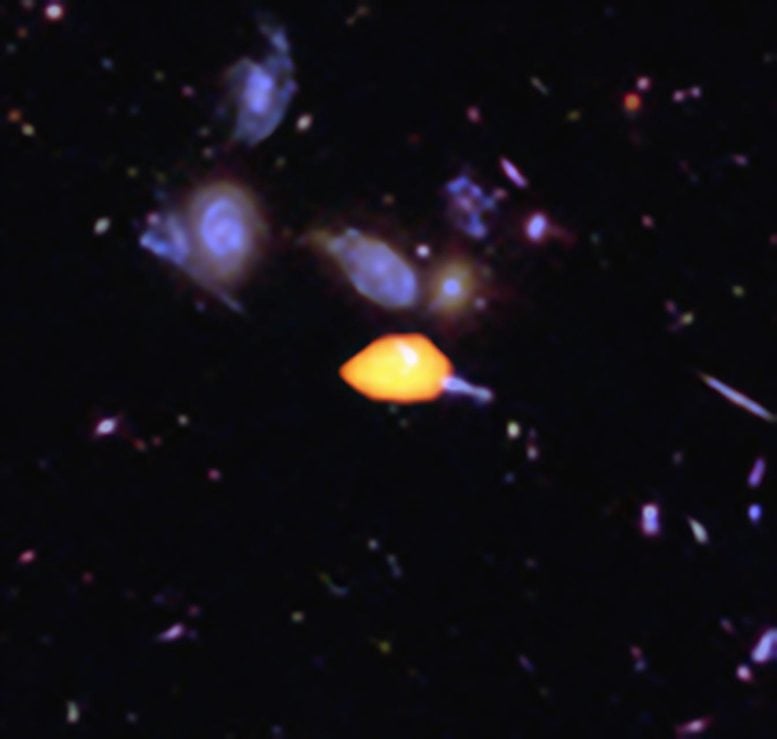
ALMA surveyed the Hubble Ultra Deep Field, uncovering new details of the star-forming history of the Universe. This close-up image reveals one such galaxy (orange), rich in carbon monoxide, showing it is primed for star formation. The blue features are galaxies imaged by Hubble. This image is based on the very deep ALMA survey by Manuel Aravena, Fabian Walter and colleagues, covering about one sixth of the full HUDF area. Credit: B. Saxton (NRAO/AUI/NSF); ALMA (ESO/NAOJ/NRAO); NASA/ESA Hubble
Jim Dunlop, lead author on the deep imaging paper sums up its importance: “This is a breakthrough result. For the first time we are properly connecting the visible and ultraviolet light view of the distant Universe from Hubble and far-infrared/millimeter views of the Universe from ALMA.”
The second team, led by Manuel Aravena of the Núcleo de Astronomía, Universidad Diego Portales, Santiago, Chile, and Fabian Walter of the Max Planck Institute for Astronomy in Heidelberg, Germany, conducted a deeper search across about one sixth of the total HUDF.[3]
“We conducted the first fully blind, three-dimensional search for cool gas in the early Universe,” said Chris Carilli, an astronomer with the National Radio Astronomy Observatory (NRAO) in Socorro, New Mexico, USA and member of the research team. “Through this, we discovered a population of galaxies that is not clearly evident in any other deep surveys of the sky.”[4]
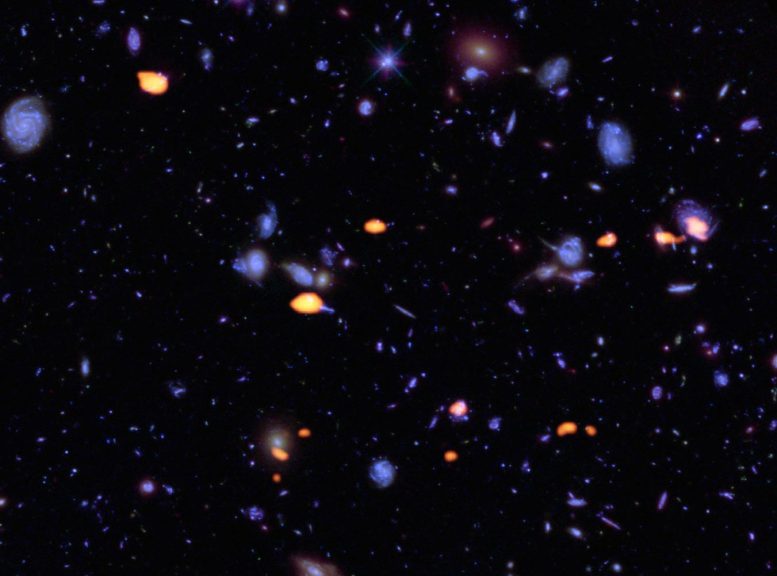
A trove of galaxies, rich in carbon monoxide (indicating star-forming potential) were imaged by ALMA (orange) in the Hubble Ultra Deep Field. The blue features are galaxies imaged by Hubble. This image is based on the very deep ALMA survey by Manuel Aravena, Fabian Walter and colleagues, covering about one sixth of the full HUDF area. Credit: B. Saxton (NRAO/AUI/NSF); ALMA (ESO/NAOJ/NRAO); NASA/ESA Hubble
Some of the new ALMA observations were specifically tailored to detect galaxies that are rich in carbon monoxide, indicating regions primed for star formation. Even though these molecular gas reservoirs give rise to the star formation activity in galaxies, they are often very hard to see with Hubble. ALMA can therefore reveal the “missing half” of the galaxy formation and evolution process.
“The new ALMA results imply a rapidly rising gas content in galaxies as we look back further in time,” adds lead author of two of the papers, Manuel Aravena (Núcleo de Astronomía, Universidad Diego Portales, Santiago, Chile). “This increasing gas content is likely the root cause for the remarkable increase in star formation rates during the peak epoch of galaxy formation, some 10 billion years ago.”
The results presented today are just the start of a series of future observations to probe the distant Universe with ALMA. For example, a planned 150-hour observing campaign of the HUDF will further illuminate the star-forming potential history of the Universe.
“By supplementing our understanding of this missing star-forming material, the forthcoming ALMA Large Program will complete our view of the galaxies in the iconic Hubble Ultra Deep Field,” concludes Fabian Walter.
Notes
- Astronomers specifically selected the area of study in the HUDF, a region of space in the faint southern constellation of Fornax (The Furnace), so ground-based telescopes in the southern hemisphere, like ALMA, could probe the region, expanding our knowledge about the very distant Universe.
Probing the deep, but optically invisible, Universe was one of the primary science goals for ALMA. - In this context “high mass” means galaxies with stellar masses greater than 20 billion times that of the Sun ( 2 × 1010 solar masses). For comparison, the Milky Way is a large galaxy and has a mass of around 100 billion solar masses.
- This region of the sky is about seven hundred times smaller than the area of the disc of the full Moon as seen from Earth. One of the most startling aspects of the HUDF was the vast number of galaxies found in such a tiny fraction of the sky.
- ALMA’s ability to see a completely different portion of the electromagnetic spectrum from Hubble allows astronomers to study a different class of astronomical objects, such as massive star-forming clouds, as well as objects that are otherwise too faint to observe in visible light, but visible at millimeter wavelengths.
The search is referred to as “blind” as it was not focused on any particular object.
The new ALMA observations of the HUDF include two distinct, yet complementary types of data: continuum observations, which reveal dust emission and star formation, and a spectral emission line survey, which looks at the cold molecular gas fueling star formation. The second survey is particularly valuable because it includes information about the degree to which light from distant objects has been redshifted by the expansion of the Universe. Greater redshift means that an object is further away and seen farther back in time. This allows astronomers to create a three-dimensional map of star-forming gas as it evolves over cosmic time.
Earlier searches to map the distribution of cool gas in the early Universe has been carried out using the Plateau de Bure observatory in the French Alps and with the Karl G. Jansky Very Large Array in the US.
Reference:
“A deep ALMA image of the Hubble Ultra Deep Field” by J.S. Dunlop, R.J. McLure, A.D. Biggs, J.E. Geach, M.J. Michalowski, R.J. Ivison, W. Rujopakarn, E. van Kampen, A. Kirkpatrick, A. Pope, D. Scott, A.M. Swinbank, T.A. Targett, I. Aretxaga, J.E. Austermann, P.N. Best, V.A. Bruce, E.L. Chapin, S. Charlot, M. Cirasuolo, K.E.K. Coppin, R.S. Ellis, S.L. Finkelstein, C.C. Hayward, D.H. Hughes, E. Ibar, S. Khochfar, M.P. Koprowski, D. Narayanan, C. Papovich, J.A. Peacock, B. Robertson, T. Vernstrom, P.P. van der Werf, G.W. Wilson and M. Yun, 30 November 2016, Monthly Notices of the Royal Astronomical Society.
DOI: 10.1093/mnras/stw3088
PDF
“The ALMA Spectroscopic Survey in the Hubble Ultra Deep Field: Search for the [CII] Line and Dust Emission in 6 < z < 8 Galaxies” by M. Aravena, R. Decarli, F. Walter, R. Bouwens, P. A. Oesch, C. L. Carilli, F. E. Bauer, E. Da Cunha, E. Daddi, J. Gónzalez-López, R. J. Ivison, D. A. Riechers, Ian Smail, A. M. Swinbank, A. Weiss, T. Anguita, R. Bacon, E. Bell, F. Bertoldi, P. Cortes, P. Cox, J. Hodge, E. Ibar, H. Inami, L. Infante, A. Karim, B. Magnelli, K. Ota, G. Popping, P. van der Werf, J. Wagg and Y. Fudamoto, 9 August 2016, The Astrophysical Journal.
DOI: 10.3847/1538-4357/833/1/71
PDF
“The ALMA Spectroscopic Survey in the Hubble Ultra Deep Field: Molecular Gas Reservoirs in High-Redshift Galaxies” by Hanae Inami, Roberto Decarli, Fabian Walter, Axel Weiss, Chris Carilli, Manuel Aravena, Leindert Boogaard, Jorge Gonzaĺez-López, Gergö Popping, Elisabete da Cunha, Roland Bacon, Franz Bauer, Thierry Contini, Paulo C. Cortes, Pierre Cox, Emanuele Daddi, Tanio Díaz-Santos, Melanie Kaasinen, Dominik A. Riechers, Jeff Wagg, Paul van der Werf and Lutz Wisotzki, 19 October 2016, The Astrophysical Journal.
DOI: 10.3847/1538-4357/abba2f
PDF
“The ALMA Spectroscopic Survey in the Hubble Ultra Deep Field: CO Luminosity Functions and the Evolution of the Cosmic Density of Molecular Gas” by Manuel Aravena, Roberto Decarli, Jorge Gónzalez-López, Leindert Boogaard, Fabian Walter, Chris Carilli, Gergö Popping, Axel Weiss, Roberto J. Assef, Roland Bacon, Franz Erik Bauer, Frank Bertoldi, Richard Bouwens, Thierry Contini, Paulo C. Cortes, Pierre Cox, Elisabete da Cunha, Emanuele Daddi, Tanio Díaz-Santos, David Elbaz, Jacqueline Hodge, Hanae Inami, Rob Ivison, Olivier Le Fèvre, Benjamin Magnelli, Pascal Oesch, Dominik Riechers, Ian Smail, Rachel S. Somerville, A. M. Swinbank, Bade Uzgil, Paul van der Werf, Jeff Wagg and Lutz Wisotzki, 11 September 2016, The Astrophysical Journal.
DOI: 10.3847/1538-4357/ab30df
PDF
“The ALMA Spectroscopic Survey in the Hubble Ultra Deep Field: Continuum Number Counts, Resolved 1.2-mm Extragalactic Background, and Properties of the Faintest Dusty Star Forming Galaxies” by M. Aravena, R. Decarli, F. Walter, E. Da Cunha, F. E. Bauer, C. L. Carilli, E. Daddi, D. Elbaz, R. J. Ivison, D. A. Riechers, I. Smail, A. M. Swinbank, A. Weiss, T. Anguita, R. J. Assef, E. Bell, F. Bertoldi, R. Bacon, R. Bouwens, P. Cortes, P. Cox, J. Gónzalez-López, J. Hodge, E. Ibar, H. Inami, L. Infante, A. Karim, O. Le Fèvre, B. Magnelli, K. Ota, G. Popping, K. Sheth and P. van der Werf, J. Wagg, 8 September 2016, The Astrophysical Journal.
DOI: 10.3847/1538-4357/833/1/68
PDF
“The ALMA Spectroscopic Survey in the Hubble Ultra Deep Field: Survey Description” by Fabian Walter, Roberto Decarli, Manuel Aravena, Chris Carilli, Rychard Bouwens, Elisabete da Cunha, Emanuele Daddi, R. J. Ivison, Dominik Riechers, Ian Smail, Mark Swinbank, Axel Weiss, Timo Anguita, Roberto Assef, Roland Bacon, Franz Bauer, Eric F. Bell, Frank Bertoldi, Scott Chapman, Luis Colina, Paulo C. Cortes, Pierre Cox, Mark Dickinson, David Elbaz, Jorge Gónzalez-López, Edo Ibar, Hanae Inami, Leopoldo Infante, Jacqueline Hodge, Alex Karim, Olivier Le Fevre, Benjamin Magnelli, Roberto Neri, Pascal Oesch, Kazuaki Ota, Gergö Popping, Hans-Walter Rix, Mark Sargent, Kartik Sheth, Arjen van der Wel, Paul van der Werf and Jeff Wagg, 22 July 2016, The Astrophysical Journal.
DOI: 10.3847/1538-4357/833/1/67
PDF
“The ALMA Spectroscopic Survey in the Hubble Ultra Deep Field: the Infrared excess of UV-selected z= 2-10 Galaxies as a Function of UV-continuum Slope and Stellar Mass” by Rychard Bouwens, Manuel Aravena, Roberto Decarli, Fabian Walter, Elisabete da Cunha, Ivo Labbe, Franz Bauer, Frank Bertoldi, Chris Carilli, Scott Chapman, Emanuele Daddi, Jacqueline Hodge, Rob Ivison, Alex Karim, Olivier Le Fevre, Benjamin Magnelli, Kazuaki Ota, Dominik Riechers, Ian Smail, Paul van der Werf, Axel Weiss, Pierre Cox, David Elbaz, Jorge Gonzalez-Lopez, Leopoldo Infante, Pascal Oesch, Jeff Wagg and Steve Wilkins, 6 August 2016, The Astrophysical Journal.
DOI: 10.3847/1538-4357/833/1/72
PDF
“The ALMA Spectroscopic Survey in the Hubble Ultra Deep Field: Implication for spectral line intensity mapping at millimeter wavelengths and CMB spectral distortions” by C.L. Carilli, J. Chluba, R. Decarli, F. Walter, M. Aravena, J. Wagg, G. Popping, P. Cortes, J. Hodge, A. Weiss, F. Bertoldi and D. Riechers, 9 August 2016, The Astrophysical Journal.
DOI: 10.3847/1538-4357/833/1/73
PDF
The teams are composed of:
M. Aravena (Núcleo de Astronomía, Universidad Diego Portales, Santiago, Chile), R. Decarli (Max-Planck Institut für Astronomie, Heidelberg, Germany), F. Walter (Max-Planck Institut für Astronomie, Heidelberg, Germany; Astronomy Department, California Institute of Technology, USA; NRAO, Pete V. Domenici Array Science Center, USA), R. Bouwens (Leiden Observatory, Leiden, The Netherlands; UCO/Lick Observatory, Santa Cruz, USA), P.A. Oesch (Astronomy Department, Yale University, New Haven, USA), C.L. Carilli (Leiden Observatory, Leiden, The Netherlands; Astrophysics Group, Cavendish Laboratory, Cambridge, UK), F.E. Bauer (Instituto de Astrofísica, Pontificia Universidad Católica de Chile, Santiago, Chile; Millennium Institute of Astrophysics, Chile; Space Science Institute, Boulder, USA), E. Da Cunha (Research School of Astronomy and Astrophysics, Australian National University, Canberra, Australia; Centre for Astrophysics and Supercomputing, Swinburne University of Technology, Hawthorn, Australia), E. Daddi (Laboratoire AIM, CEA/DSM-CNRS-Université Paris Diderot, Orme des Merisiers, France), J. Gónzalez-López (Instituto de Astrofísica, Pontificia Universidad Católica de Chile, Santiago, Chile), R.J. Ivison (European Southern Observatory, Garching bei München, Germany; Institute for Astronomy, University of Edinburgh, Edinburgh, UK), D.A. Riechers (Cornell University, 220 Space Sciences Building, Ithaca, USA), I. Smail (Institute for Computational Cosmology, Durham University, Durham, UK), A.M. Swinbank (Institute for Computational Cosmology, Durham University, Durham, UK), A. Weiss (Max-Planck-Institut für Radioastronomie, Bonn, Germany), T. Anguita (Departamento de Ciencias Físicas, Universidad Andrés Bello, Santiago, Chile; Millennium Institute of Astrophysics, Chile), R. Bacon (Université Lyon 1, Saint Genis Laval, France), E. Bell (Department of Astronomy, University of Michigan, USA), F. Bertoldi (Argelander Institute for Astronomy, University of Bonn, Bonn, Germany), P. Cortes (Joint ALMA Observatory – ESO, Santiago, Chile; NRAO, Pete V. Domenici Array Science Center, USA), P. Cox (Joint ALMA Observatory – ESO, Santiago, Chile), J. Hodge (Leiden Observatory, Leiden, The Netherlands), E. Ibar (Instituto de Física y Astronomía, Universidad de Valparaíso, Valparaiso, Chile), H. Inami (Université Lyon 1, Saint Genis Laval, France), L. Infante (Instituto de Astrofísica, Pontificia Universidad Católica de Chile, Santiago, Chile), A. Karim (Argelander Institute for Astronomy, University of Bonn, Bonn, Germany), B. Magnelli (Argelander Institute for Astronomy, University of Bonn, Bonn, Germany), K. Ota (Kavli Institute for Cosmology, University of Cambridge, Cambridge, UK; Cavendish Laboratory, University of Cambridge, UK), G. Popping (European Southern Observatory, Garching bei München, Germany), P. van der Werf (Leiden Observatory, Leiden, The Netherlands), J. Wagg (SKA Organization, Cheshire, UK), Y. Fudamoto (European Southern Observatory, Garching bei München, Germany; Universität-Sternwarte München, München, Germany), D. Elbaz (Laboratoire AIM, CEA/DSM-CNRS-Universite Paris Diderot, France), S. Chapman (Dalhousie University, Halifax, Nova Scotia, Canada), L.Colina (ASTRO-UAM, UAM, Unidad Asociada CSIC, Spain), H.W. Rix (Max-Planck Institut für Astronomie, Heidelberg, Germany), Mark Sargent (Astronomy Centre, University of Sussex, Brighton, UK), Arjen van der Wel (Max-Planck Institut für Astronomie, Heidelberg, Germany)
K. Sheth (NASA Headquarters, Washington DC, USA), Roberto Neri (IRAM, Saint-Martin d’Hères, France), O. Le Fèvre (Aix Marseille Université, Laboratoire d’Astrophysique de Marseille, Marseille, France), M. Dickinson (Steward Observatory, University of Arizona, USA), R. Assef (Núcleo de Astronomía, Universidad Diego Portales, Santiago, Chile), I. Labbé (Leiden Observatory, Leiden University, Netherlands), S. Wilkins (Astronomy Centre, University of Sussex, Brighton, UK), J.S. Dunlop (University of Edinburgh, Royal Observatory, Edinburgh, United Kingdom), R.J. McLure (University of Edinburgh, Royal Observatory, Edinburgh, United Kingdom), A.D. Biggs (ESO, Garching, Germany), J.E. Geach (University of Hertfordshire, Hatfield, United Kingdom), M.J. Michałowski (University of Edinburgh, Royal Observatory, Edinburgh, United Kingdom), W. Rujopakarn (Chulalongkorn University, Bangkok, Thailand), E. van Kampen (ESO, Garching, Germany), A. Kirkpatrick (University of Massachusetts, Amherst, Massachusetts, USA), A. Pope (University of Massachusetts, Amherst, Massachusetts, USA), D. Scott (University of British Columbia, Vancouver, British Columbia, Canada), T.A. Targett (Sonoma State University, Rohnert Park, California, USA), I. Aretxaga (Instituto Nacional de Astrofísica, Optica y Electronica, Mexico), J.E. Austermann (NIST Quantum Devices Group, Boulder, Colorado, USA), P.N. Best (University of Edinburgh, Royal Observatory, Edinburgh, United Kingdom), V.A. Bruce (University of Edinburgh, Royal Observatory, Edinburgh, United Kingdom), E.L. Chapin (Herzberg Astronomy and Astrophysics, National Research Council Canada, Victoria, Canada), S. Charlot (Sorbonne Universités, UPMC-CNRS, UMR7095, Institut d’Astrophysique de Paris, Paris, France), M. Cirasuolo (ESO, Garching, Germany), K.E.K. Coppin (University of Hertfordshire, College Lane, Hatfield, United Kingdom), R.S. Ellis (ESO, Garching, Germany), S.L. Finkelstein (The University of Texas at Austin, Austin, Texas, USA), C.C. Hayward (California Institute of Technology, Pasadena, California, USA), D.H. Hughes (Instituto Nacional de Astrofísica, Optica y Electronica, Mexico), S. Khochfar (University of Edinburgh, Royal Observatory, Edinburgh, United Kingdom), M.P. Koprowski (University of Hertfordshire, College Lane, Hatfield, United Kingdom), D. Narayanan (Haverford College, Haverford, Pennsylvania, USA), C. Papovich (Texas A & M University, College Station, Texas, USA), J.A. Peacock (University of Edinburgh, Royal Observatory, Edinburgh, United Kingdom), B. Robertson (University of California, Santa Cruz, Santa Cruz, California, USA), T. Vernstrom (Dunlap Institute for Astronomy and Astrophysics, University of Toronto, Toronto, Ontario, Canada), G.W. Wilson (University of Massachusetts, Amherst, Massachusetts, USA) and M. Yun (University of Massachusetts, Amherst, Massachusetts, USA).

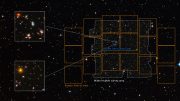
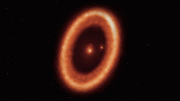
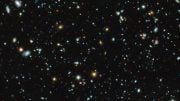

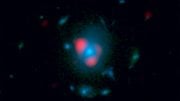
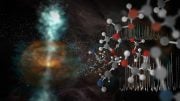
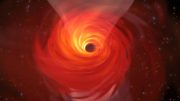

There are some very complicated issues of galaxy formation. Unfortunately, here is the same problem as with the stars. The origin of galaxies remains unclear, in spite of huge activity in the field. What the “formation” means? It means that we have the material that is assembling into galaxies.